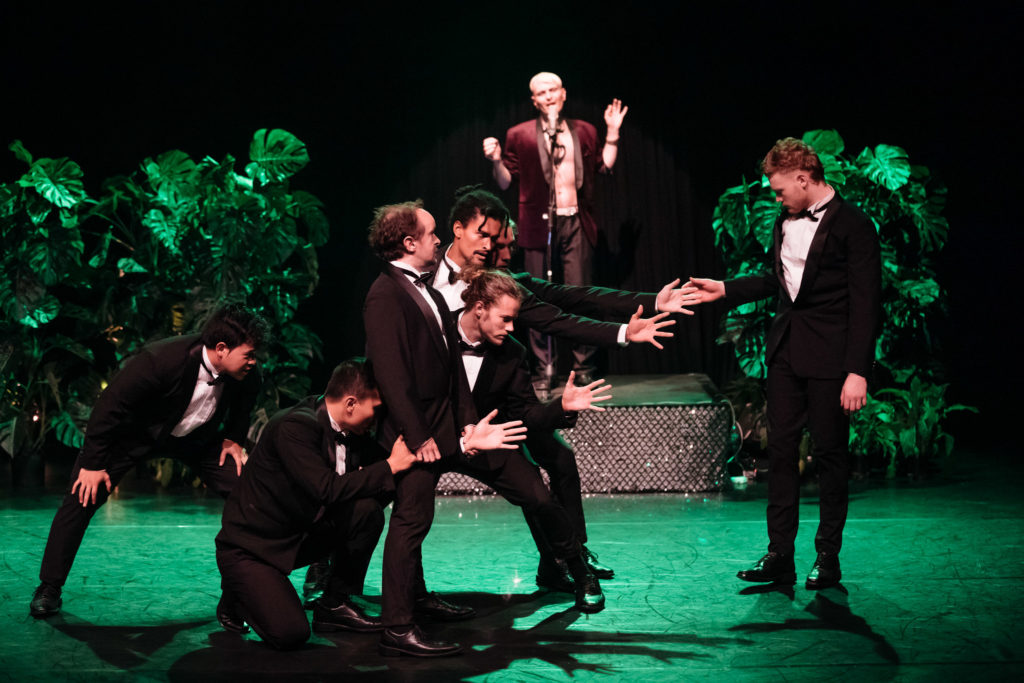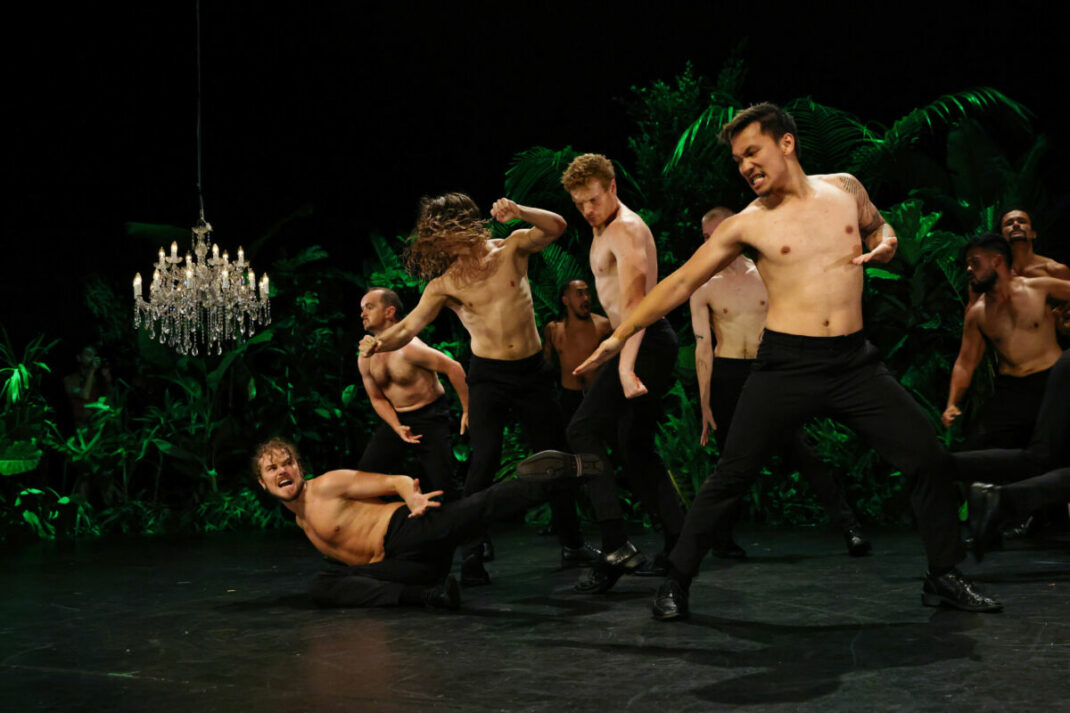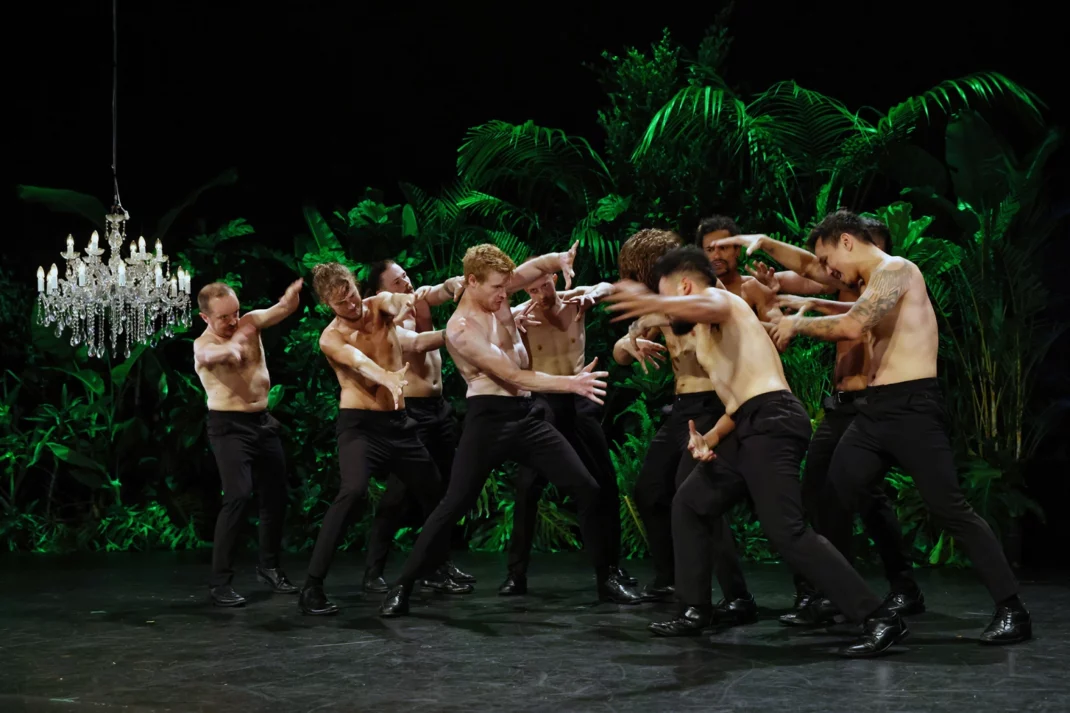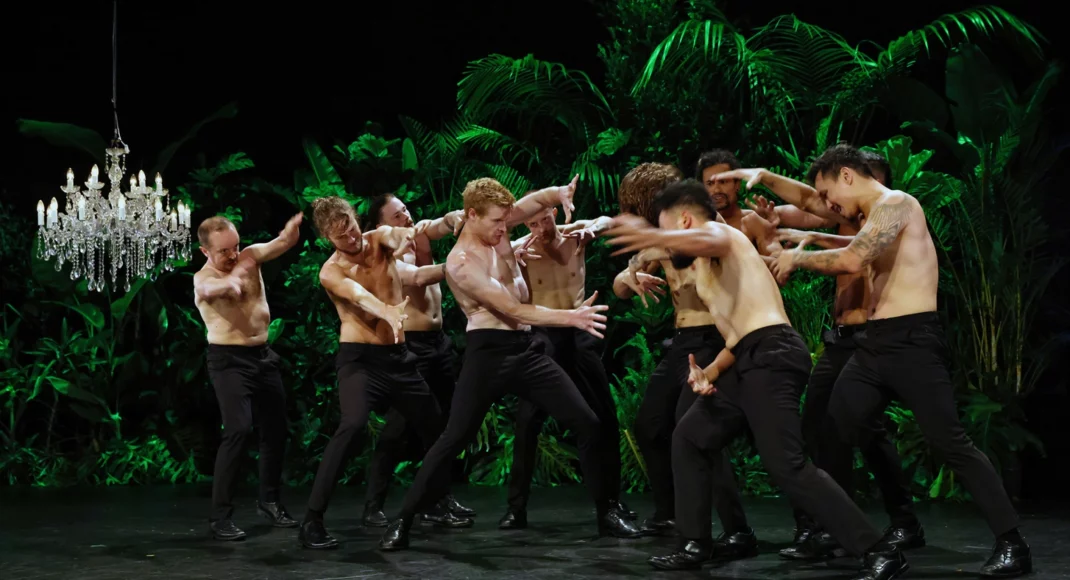4 March 2023. Everest Theatre, Seymour Centre, Sydney (in association with Sydney WorldPride Arts)
KING begins with Bulgarian singer/songwriter Ivo Dimchev walking down an aisle of the auditorium and taking his place onstage in front of the still-lowered front curtain. With a keyboard in hand he starts singing in his mesmerising voice, at times as a bass, at others as a counter-tenor. As his song ends, the curtain rises to reveal a combination set—a jungle of green growth and a mini cabaret setting represented by a chandelier. Against this background stands an all-male cast of ten dancers dressed formally in black-tie dinner suits. They are ready to dance.
The early choreography was fast-paced and extremely acrobatic, almost circus-style with overtones of street dancing. It was also quite formalised with group shapes appearing and disappearing and hands and arms forming group patterns, sometimes still and picture perfect, sometimes in motion. It’s transfixing to watch and seems to say, ‘Look, this is how men can be and behave, and how we can connect with each other. We have power’

But slowly individual contacts were made amongst the group, many with obvious sexual overtones. The dancers then removed their coats, ties and shirts and began a different kind of connection with each other. The way that identity and power showed themselves in the opening scenes was slowly changing into a kind of aggression and anger, and perhaps also resentment of a kind. Dimchev continued to sing and provoke the performers.

Choreographically there were changes too. The men started to look progressively more animal-like, less than human at times. There were even moments when the Faun from Vaslav Nijinsky’s Afternoon of a Faun flashed across my mind. Toby Derrick and Joel Fenton, as the two main protagonists, held one’s attention. Derrick by this stage was completely nude and Fenton, who was seen as too close to Derrick for the liking of the others, were set upon until both ended up on the floor, motionless and covered with leaves from the jungle. Slowly darkness brought the show to an end.
I was interested in the audience reaction as the work unfolded. In the beginning, as we watched moments that were sometimes playful, sometimes with sexual overtones, often spectacularly physical, and often showing a certain strength in uniformity, there were chuckles of pleasure from the audience as they sat back and watched in a relaxed manner. But as the connections between the dancers began to unravel somewhat, and become more aggressive, there was silence and many of the audience leaned forward in their seats wondering (perhaps anxiously) what was going to happen next. Were they surprised? Were they expecting what occurred or not?
When I spoke to Shaun Parker earlier this year he told me that KING was about ‘a different way of thinking about sexual identity and power and how they are linked.’ KING was not by any means a hagiography of the male sex, that is there was no undue reverence to, or idolising of the male. But then perhaps nor was there any suggestion of denunciation or disapproval of the changes that slowly took place. It seems to me that Parker was presenting us with a possible view of male identity and power rather than implying any positive or negative judgement.
This was an engrossing show from Shaun Parker & Company in terms of its choreography, its performance by all ten dancers, its musical background and input from Dimchev, and its visual elements.
Michelle Potter, 5 March 2023
Featured image: Scene from KING, 2023. Photo: © Prudence Upton

